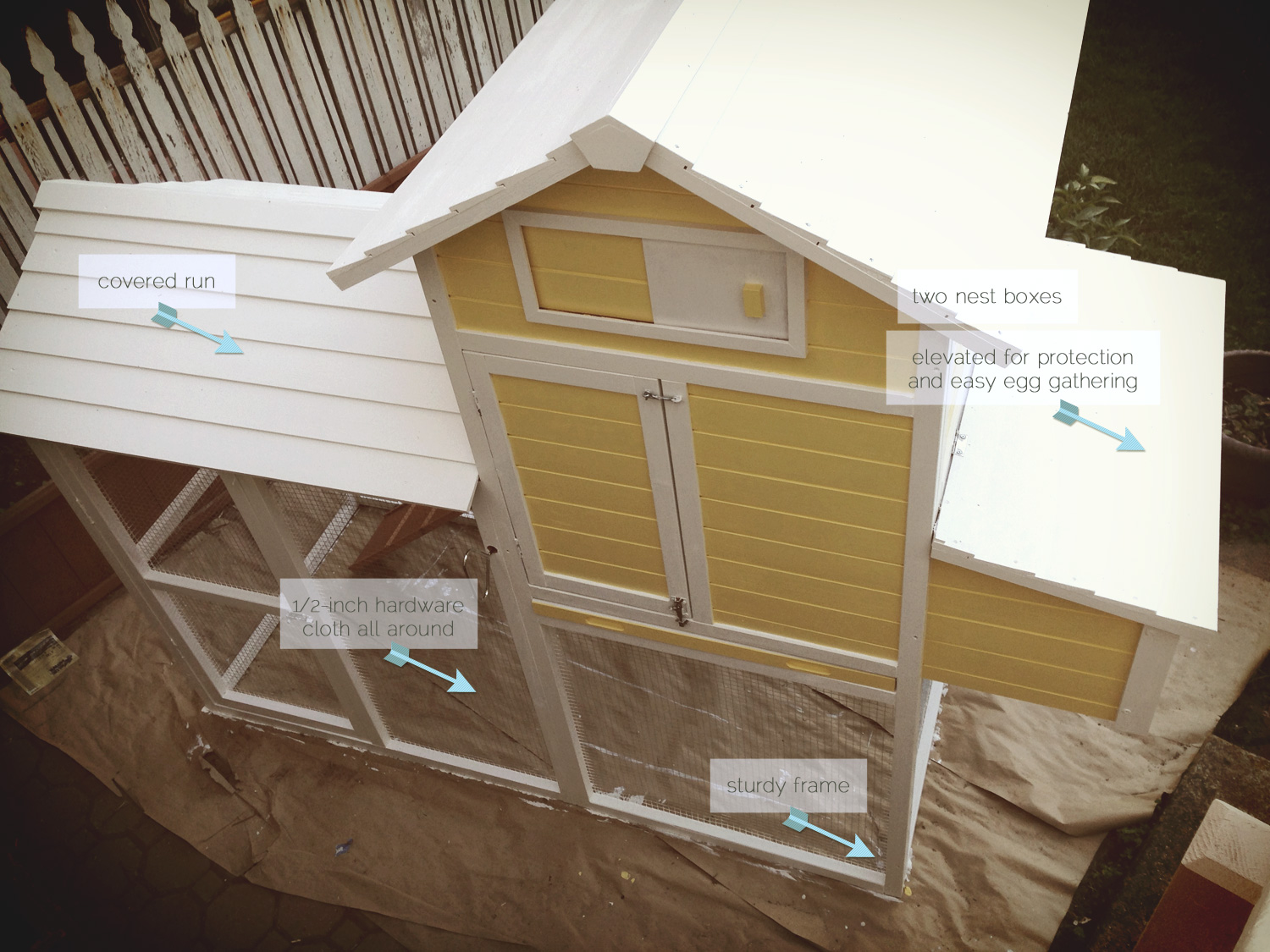It’s painted and pretty… let’s take a look at the coop! I’ve pointed out a few interesting things to notice along the way, but remember, this is a post about some first-time chicken keepers’ first-ever coop. All the perks and drawbacks I mention are things we’ve been told matter, and are not yet tried and true through personal experience.
The most important thing, over and over again, are the locks! Humans aren’t the only creatures who think chickens and their eggs make for fine eating. For most predators, a single fat lock on a door may do, but we know for a fact there are raccoons ’round these parts, and raccoons are *smart*. Their teeny hands have five teeny nimble fingers, including a thumb-like appendage, so the best way to stop them waltzing right in is to use two locks on every entrance, and to use different types of locks that require two hands to release. That’s why that eye-hook up on the coop door has a fancy spring mechanism, and others have a turn-and-pull thing going on.
The coop, or hen-house, is simply the enclosed yellow box portion, in which the chickens will sleep (roost) and lay eggs. Sometimes they’ll hang out in there, but most will prefer to be out on the ground during the day, scratching for food. Not all coops have a run attached to them, but it was essential for our backyard setup, in case we aren’t home for a few days and need to leave the girls locked up. Our intention is to let our ladies out in the yard during the day, since we usually work from home and can keep a distant eye on them, but there’s always the possibility that won’t work out and a run is a good backup plan.
A fancy thing about our particular coop is that it opens way up! Had we built this ourselves, I never would have attempted such a thing, but a hinged roof is pretty darn cool. It lets in air and light when things get warm and musty. The ventilation window up high where hot air gathers will help with that too. You’ll see there isn’t a floor on the coop, which is nice for scratching the ground but easier for predators to burrow into. We’ll remedy that shortly by adding more hardware cloth across the bottom.
Let’s go inside! A ramp with slats placed evenly and not too far apart is all the chickens need to navigate between coop and run. The sliding door can be shut to provide an extra sense of security (if prowling but foiled predators are keeping the chickens awake, for instance), and the long handle makes it easy to open up first thing in the morning (i.e. before coffee).
Inside the coop itself things are simple – just some roosting poles and nest boxes, which is where the egg magic happens (hopefully). All four hens will share the two nest boxes, and they don’t usually sleep in them. That’s what the roosting poles are for. What do you think, should we decorate?
Some coops are basically small buildings that humans can walk around in, but we didn’t have space for that. In these smaller coops it’s important to have access to both the hens and their environment, in case you need to tidy up.
The nest boxes on the exterior are nice too – no disturbing the hens by walking into their space, or reaching really far into the depths of the coop. The fact that the nest boxes are raised so far up off the ground is a bonus too, because it means we won’t have to bend over to collect eggs. It also keeps them out of reach of predators, of course.
This coop is a lot taller than the ones you see on mail-order sites. Apparently lots of those starter coops are designed for affordable shipping, so they have to be made from shorter pieces. The hens probably don’t really care one way or the other, but the taller height will be a little more comfy to interact with on a daily basis.
So that’s our coop! There are some planned improvements, of course: a hardware cloth flooring, placement in the yard, and maybe some pretty curtains and a window box. What do you think? Anything we didn’t think about and should fix before our peeps get their feathers?










Recent Comments